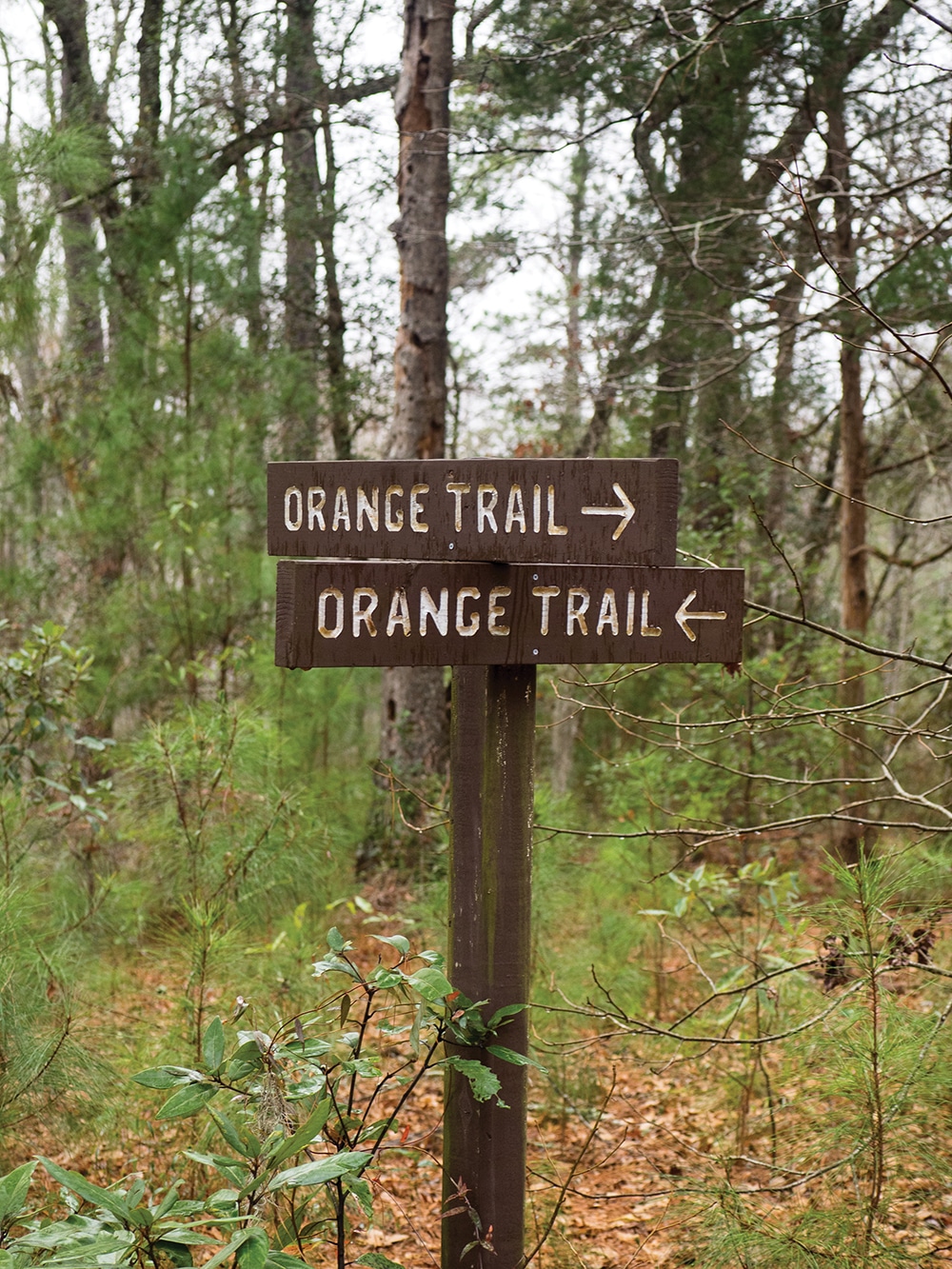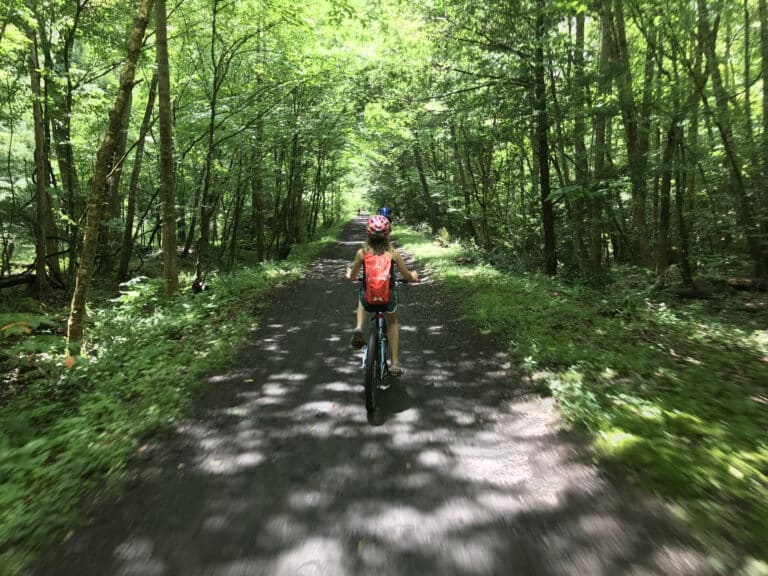The first time I heard a visitor calling for help, it came from the old ferry lake. Following the yells, I walked onto the aluminum fishing pier. Two bewildered college girls sat cross-legged on a floating platform, in the middle of this blackwater inlet of the Waccamaw River.
The platform had come down the river with a flood after Hurricane Florence, and someone had tied it to the pier. Until twenty minutes before, when the girls untied the platform and drifted into the middle of the lake. No paddles. No plan. But they did have a smartphone, and they were engrossed in a video call with a boy. One girl was bragging about how they were, no joke, stuck on a platform in the center of a random lake.
The sun was a diffuse glow behind gray clouds, and the whole scene felt pretty typical for the Refuge of Lowered Expectations. So, I pulled out my phone to document the encounter.
“He’s taking photos of us,” said one girl proudly, and the other posed.
“Not much happens here,” I shouted. “This is too good to pass up.”
I came across these girls a year ago. Long before Coronavirus closures turned this tiny postage-stamp rec area, in South Carolina’s Waccamaw National Wildlife Refuge, into the most happening spot in the county with So Few Sidewalks.
Back then, maybe 20 people visited per day. It’s one of the few outdoor opportunities in the area, offering 300 acres of longleaf pine forest, blackwater creeks, cypress swamps, and fishing ponds.
Some visitors walk laps along three miles of paths and boardwalk. Others jog or bike. An occasional birder wanders with binocs. The few fishermen never catch any fish. High school and college kids smoke weed or drink beers on alligator island. Or they do donuts in their parents’ sedans near the canoe launch. A young ranger darts from behind trees, trying to catch them.
For the few regulars, it’s common to pass the same people 10 times in two hours. Occasionally, first-time visitors ask how to find the hiking loop—after already completing the hiking loop.
“You’re on the loop,” I say. They stare skeptically, like I’m hiding a longer and more exciting trail behind my back.
Other questions include:
“Where’s all the wildlife in this wildlife refuge?”
“We must be lost, because I swear we were here ten minutes ago?”
“Is this all there is?
“It’s out there,” I answer. “No, you’re not lost. Yes, this is all there is.”
I totally get their disappointment. Many of us—high school kids, regulars, the ranger—share a feeling. How did we end up here?
For three years, I’ve visited the refuge four times per week, whenever I’m in town. We relocated when my wife started working at the nearby college. I’m a fulltime freelancer, with much of my work including adventure-travel projects. It’s a career I hoped would take me to unexpected and remote places. Sure enough, it has. I just never expected one of those places to be the refuge of lowered expectations.
For hours, I walk or mountain bike laps on the gravel roads, the lone single-track trail, the paved entry road, the oft-flooded boardwalk, the sandy straightaway, the alligator island, the fishing pier. I once paddled the “paddling” lake, which is 18 inches deep. Now I brave the main channel with the speedboats and stay wary around corners.
At first, I was disappointed by the limitations. Eventually, I came to appreciate the small things. The pair of great horned owls calling to each other, occasionally swooping through the forest. The red-cockaded woodpeckers. The copperheads and cottonmouths darting across paths like they’re late to startle newcomers. Occasionally, random dogs sprint through the swamps after escaping their owners. The juvenile alligator, who grew up in the fishing lake, shares our boredom. Sometimes it swims toward people and just watches them.
Another fascinating species is the 16- to 20-year-olds. Behaviors observed: Bizarre dancing between pines. Shitty hatchbacks drag-racing the gravel roads. One girl photographing another girl wearing a bikini and top hat while rolling around yellow tallgrass in midwinter. A young jogger beating to death a rat snake with a log, claiming it attacked him. A pair of kids, wearing tee-shirts with pants around their ankles, having sex against a tree. Small clouds of marijuana smoke drifting through the air.
I don’t know anything about these kids’ home lives, so who am I to judge. Given some of the adults who show up in the refuge, I have theories about what the kids are escaping.
Ever since coronavirus shut down all hangouts, like outlet malls, gyms, beaches, and vacation spots, the refuge has been busier than ever. Now, 60 to 100 people visit every day. There are 20 additional regulars, many of whom are learning to appreciate there’s a refuge at all.
I now have a doppelganger. He’s my age. Looks like me. Walks and jogs loops while talking on the phone. Paddles warily into the main channel.
Newbies continue to ask, disappointed, What happened to the wildlife? How far is the parking lot? Where’s the hiking trail?
We are part of the wildlife now, I think. The parking lot isn’t far in any direction. This gravel road is the hiking trail.
If one thing comes from coronavirus closures, how about a nudge toward appreciating the smaller outdoor spots closer to home? The places we often dismiss as boring. They’ve always been here. We just need to lower our expectations to find them.
And about those college girls, floating on the refuge lake that one time, having the adventure of their lives?
They paddled with hands. They broke branches from a swamp cypress to pole with. They gave up ten times, tried again. They made a big performance about possibly skinny dipping to shore. But I couldn’t reach my wife by phone to get permission, so I had to nix that plan. They were on a video call the entire time with that boy, who kept demanding when they’d be back. The girls still hadn’t reached the shore by dusk, though they were close when I left.
The next day, the girls were gone. The floating platform had vanished. I searched for missing persons reports but never saw any.
They probably reached shore, stepped carefully atop bald cypress root knobs. Afterward, the platform floated downriver.
Or maybe they got comfortable paddling, took to the main channel for a few laps. And like the rest of us regulars, they’ve been at it ever since.
Cover photo by Mike Bezemek








